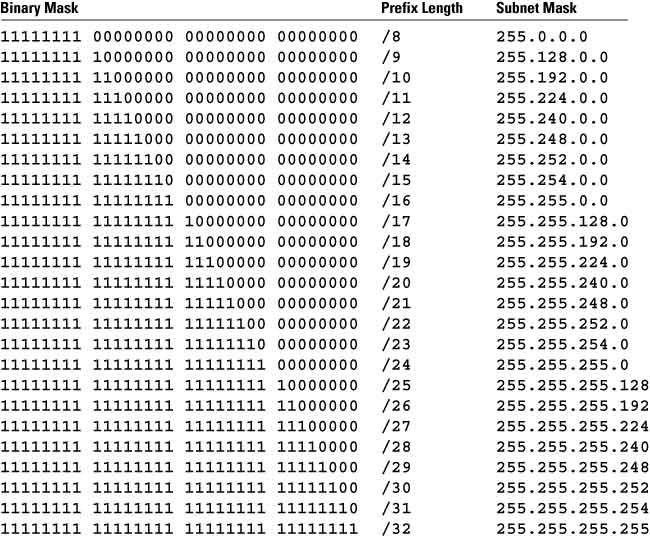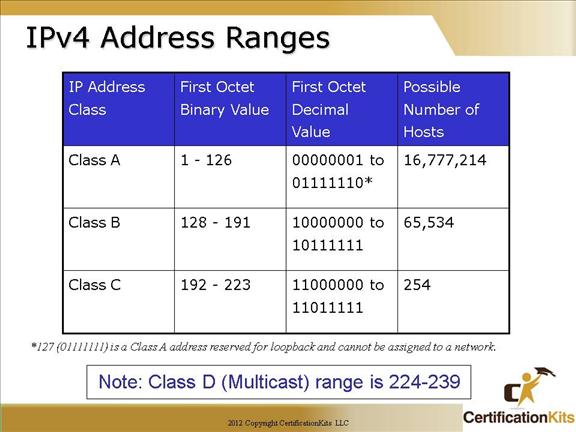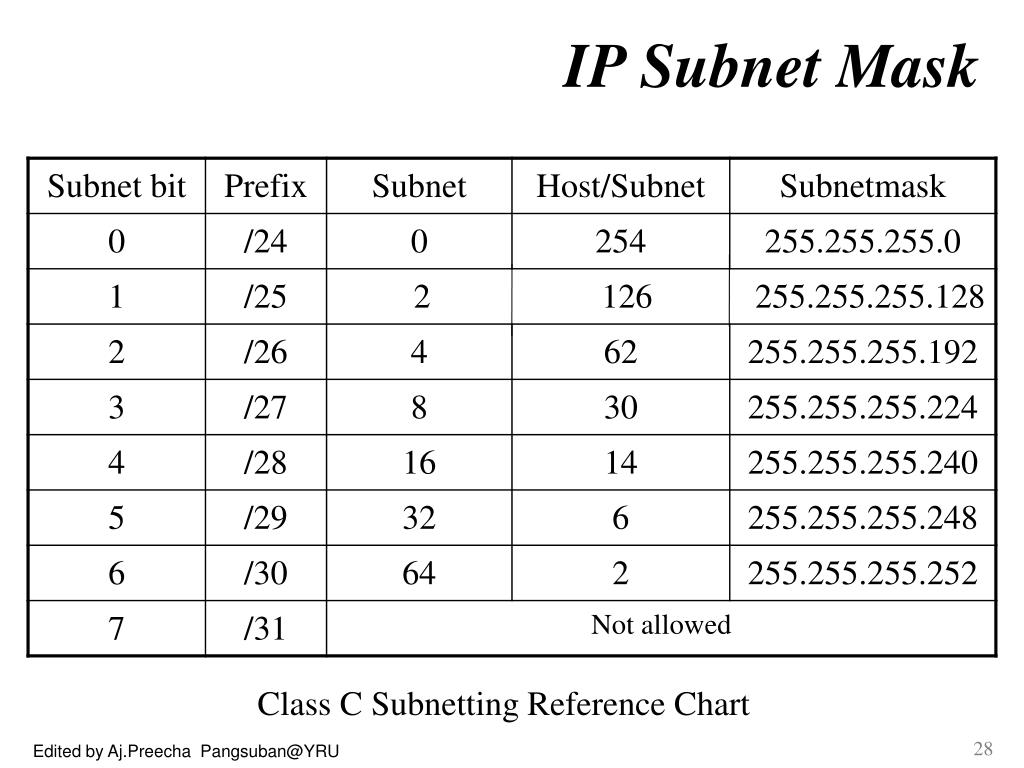
The technique used to create subnets is to use a Mask. Now a network administrator can interpret the node address any way they want, and so it is possible to split the node address into subnet and Node. Once the packet enters the private network then the Node address is used and the public Network address is not used. It is important to understand that the network part of the address is only used for routing IP packets on the public internet. Take for example a class A address which uses 1 byte for the network ID and 3 bytes for the Node ID. The solution to the problem was to split the network into small networks called sub networks or subnets.

So even though a Class A address can accommodate thousands of nodes it it totally impractical to put this many nodes on a single network. What would happen if you had a classroom with 100’s of desks i.e. You can equate a network and node address to our classroom and desk number This is just the same as having too many kids in the same classroom. IP Subnetting- Problems with Large NetworksĪll modern networks use the Ethernet data link protocol.Įthernet uses a shared media and is negatively effected when a large number of nodes are connected to the same media.

To determine the class you needed to examine the most significant byte (far left). In early IPv4 networks address classes were used to identify the number of bytes allocated to the network component. So is the network number 10, or 10.2 or 10.0.2 ?
#IPV4 ADDRESS SUBNETTING CHART PLUS#
So the address 10.0.2.1 is split into Network plus Node. Just like in our classroom example an IP address is split into two components a network component and a node component. We could even make it easier for ourselves by creating a paper mask that we put over the label that would reveal the classroom. This we do easily in our heads once we know the labelling scheme. So now when we see the following 0223 we now know that this refers to classroom 2 and computer 23. Lets assume we go for 2411 where 24 is the classroom and 11 is the computer. There are many possible permutations we just need to pick one and tell every one about out labeling scheme. So lets create our label we could use the following scheme: If we also say that classroom numbers 0 and 99 and computer numbers 0 and 99 were reserved and not allowed to be assigned then we now have a maximum of 98 classrooms and 98 computers which is enough for own requirements. We need two digits for the computer which would allow for a maximum of 100 computers (0-99).

We need two digits for the classroom which would allow for a maximum of 100 classrooms (0-99). If we assign numbers to our classrooms and computers then we could have for example: Now say we have 30 classrooms each with a maximum of 30 students and computers. Now each classroom has a desk with a computer and we have been tasked with creating a labeling system for the computers.
#IPV4 ADDRESS SUBNETTING CHART HOW TO#
What is Subnetting ?- Subnetting is the process of diving a network into small networks and is a common task on IPV4 networks.īefore we discuss how to implement it it is useful to understand why and when we need to do it and to do that we are first going to work through a simple analogy to illustrate the problem subnetting solves Subnetting AnalogyĪs an analogy imagine a school and we need to split it into class rooms.īut why split it into class rooms? The answer is to stop classes interfering with one another.


 0 kommentar(er)
0 kommentar(er)
